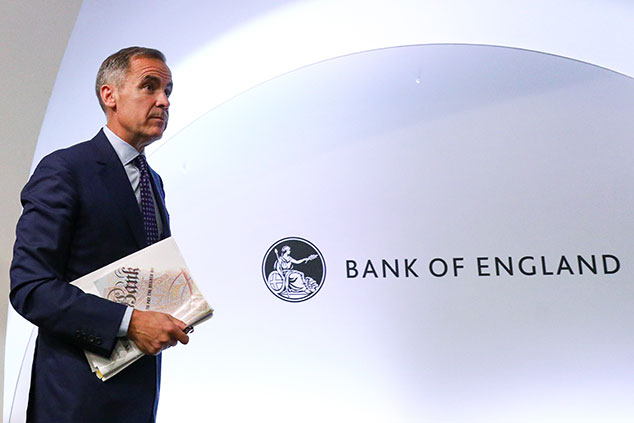
This article is taken from our FREE daily investment email Money Morning.
Every day, MoneyWeek’s executive editor John Stepek and guest contributors explain how current economic and political developments are affecting the markets and your wealth, and give you pointers on how you can profit.
In this week’s issue of MoneyWeek magazine
●
The Pacific Alliance: the four best bets in Latin America
●
Where to find Japan’s small, cash-rich bargain stocks
●
It’s too soon to sell out of tech stocks
●
A big trim for master-trust pension schemes
●
Three top-notch small European companies going cheap
● Share tips of the week
Not a subscriber? Sign up here
There are only really two ways to deal with burdensome debts, if you’re an individual.
You can repay them. Or you can refuse to repay them (default).
But if you happen to be a sovereign country, there’s a third option which combines the two in an apparently painless manner.
Inflation.
Getting rid of debt the painless way
Inflating away debt is an attractive option for governments. You don’t outright default. You pay your creditors the money you owe them. But the money they are getting is worth less than it was when you first borrowed the cash. So you win.
One of the key solutions (unspoken, because you can’t talk about inflating away your debt, or people get wise to the fact that you’re trying to do it) to the legacy of the financial crisis, has been to try to drive up inflation in order to make the level of indebtedness less painful.
It has taken a very long time. But it’s starting to look as though the strategy is gaining some traction.
We heard yesterday that the UK’s annual inflation rate (as measured by the consumer prices index – CPI), rose to 2.7% in August. Meanwhile “core” inflation (which excludes volatile essentials such as food, energy, cigarettes and booze) rose to 2.1%, from 1.9%.
Both of those readings were higher than either analysts or the Bank of England had expected – CPI was forecast to fall to 2.4%, for example.
Commentators have generally dismissed the reading as being “noise”, driven mainly by random things like computer game prices rising, and a big jump in clothing prices after a big fall the previous month. That said, as Capital Economics notes, “admittedly, utility and fuel price rises will probably hinder downward progress in inflation in the next few months”.
Yet while the Bank of England might hope that the CPI inflation rate won’t rise above 3% (as that means it’ll be at risk of having to write a letter to the Treasury), it probably isn’t too unhappy about inflation ticking higher.
There’s a couple of reasons for that. Firstly, despite the rise in inflation, wages are still rising ever so slightly more rapidly than prices, which means that individuals are at least able to keep up with the rising cost of living.
(And in fact, most people who have been in jobs for a while are probably doing a good bit better than that, as Merryn points out in her recent blog on wage rises).
So “real” wages are still rising, which means that consumers aren’t getting poorer, despite rising inflation.
Secondly, house price growth is moderating too. The latest official data suggests that annual house price growth came in at 3.1% in July, which is also barely above inflation (and in fact it’s below the retail price index measure).
This scenario is ideal for the Bank. The housing market is one of the biggest potential sources of political and financial instability in the UK. You don’t want prices to crash as that hurts everyone’s balance sheets, but you don’t want prices booming either, as that sets you up for problems in the future, not to mention the general sense of discontent it creates.
So as we’ve noted before, a gentle decline in “real” terms would be ideal – it improves affordability for those who feel locked out of the market, while inflation helps to make the mortgage burden on existing owners steadily lighter.
If Brexit isn’t a total disaster, it could give the Bank a headache
So for now, all the big numbers are going in roughly the right direction.
The tricky thing, of course, is that the Bank does need to be seen to be at least attempting to address inflation. It has raised interest rates this year, but not by very much.
Indeed, as the Bank’s own staff have pointed out in the past (and we’ve highlighted here), if interest rates were anywhere near approaching “normal”, then they’d already be a great deal higher. For example, given where inflation is now, the Bank rate would be above 3%. Instead, it’s currently at 0.75%.
So are rates likely to move again soon?
I suspect not. Given the Bank’s obsession with Brexit, it’s hard to see interest rates being moved much in the short term. Indeed, Capital Economics reckons the Bank won’t move them again until May 2019.
However, what’s more interesting is to consider what could happen if a Brexit deal is done – and then nothing particularly devastating happens to the economy.
In the “best-case” scenario, sterling would probably rebound somewhat, which would take some of the inflationary pressure off. But this would still leave the Bank playing catch-up on rate rises.
We’ll see. In the meantime, don’t expect your savings account to suddenly start paying out a decent rate of interest again anytime soon.